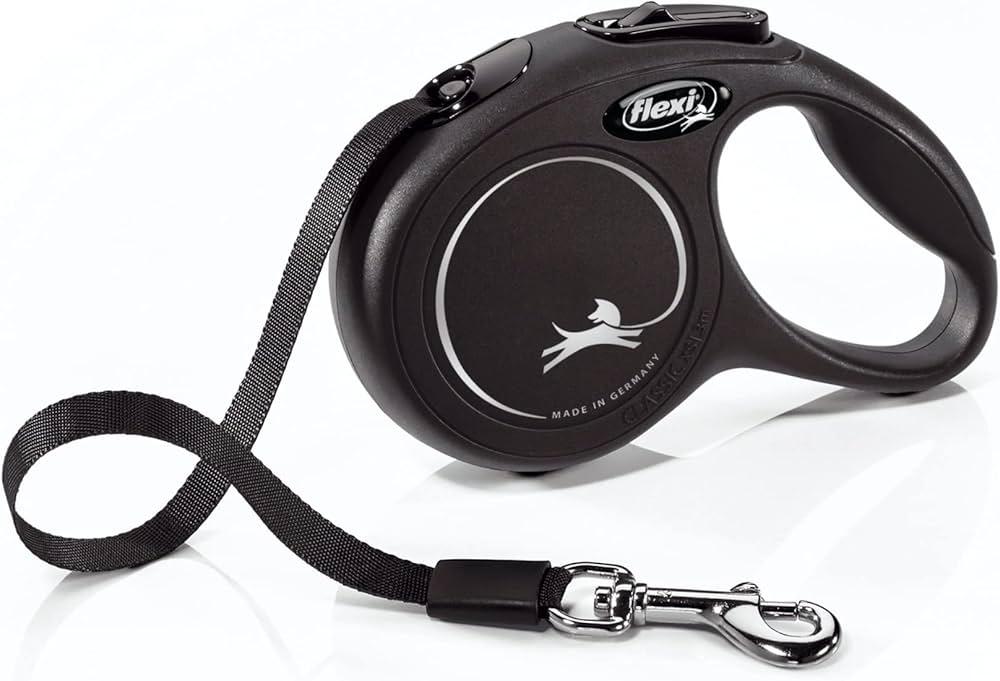When it comes to walking our canine companions, the conversation around leashes often ignites passionate debates among dog owners. Enter the retractable leash—a seemingly modern marvel that promises freedom for both pet and owner. With its coiled cord and adjustable length, it offers the allure of exploration while maintaining a semblance of control. Yet, as with many innovations, the question arises: are retractable leashes bad?
In this article, we’ll embark on an exploration of the pros and cons of retractable leashes, dissecting their impact on safety, training, and the overall walking experience. Whether you’re a seasoned pet parent or considering your first leash purchase, join us as we navigate the tangled web of opinions surrounding this popular dog-walking accessory.
Table of Contents
- Understanding Retractable Leashes: A Comprehensive Overview
- The Benefits of Retractable Leashes for Active Dog Owners
- Potential Drawbacks: Safety and Control Concerns
- Making the Right Choice: Tips for Selecting the Best Leash for Your Dog
- Q&A
- Wrapping Up
Understanding Retractable Leashes: A Comprehensive Overview
Retractable leashes have become increasingly popular among dog owners, offering the freedom for pets to explore their surroundings while still maintaining control. One of the primary advantages of these leashes is the ability to adjust the length, allowing dogs to roam with more autonomy. This can be particularly beneficial in open areas such as parks or wide sidewalks. Additionally, many retractable leashes come with features such as a braking mechanism, which provides an element of safety and control, enabling owners to manage their dog’s movements effectively in various situations. They are often designed with ergonomic handles for comfortable use during longer walks.
However, these leashes are not without their drawbacks. Some experts argue that the constant tension in retractable leashes can lead to problems such as aggression or pulling, as dogs may become accustomed to exploring without the physical cues that a traditional leash provides. Furthermore, in crowded or unpredictable environments, retractable leashes can pose a risk not only to the dog but also to other pets and pedestrians. Below is a quick overview of the pros and cons:
| Pros | Cons |
|---|---|
| Allows dogs to explore freely | Can encourage pulling behavior |
| Adjustable length for various situations | Less control in crowded areas |
| Comfortable ergonomic designs | Risk of tangling with other pets |
The Benefits of Retractable Leashes for Active Dog Owners
For active dog owners who enjoy exploring the great outdoors, retractable leashes offer a range of benefits that can enhance both the experience for the dog and for the owner. One of the main advantages is the freedom it affords the dog to roam and explore their surroundings while still being safely attached to their owner. This means that dogs can sniff, run, and engage with their environment more naturally, which is essential for their mental stimulation and physical exercise. Additionally, retractable leashes often come with a locking mechanism, allowing owners to control the distance safely, which is particularly useful when navigating crowded areas or busy streets.
Moreover, retractable leashes can be a practical choice for those who enjoy participating in activities like hiking or jogging with their furry friends. Some key features include:
- Adjustable lengths to suit various activities and environments
- Ergonomic handles that provide comfort during long walks
- A lightweight design that allows for easy storage and transport
When considering the right retractable leash, look for options with a durable cord and a reliable locking mechanism for added safety. Pairing the leash with a harness can further enhance control and comfort while you and your dog enjoy your active lifestyle.
Potential Drawbacks: Safety and Control Concerns
While retractable leashes can provide flexibility during walks, they are not without their drawbacks, particularly regarding safety. The mechanism that allows for the adjustable length can sometimes malfunction, leaving dog owners in a bind. Consider the following concerns:
Increased Risk of Injury: The thin cord of many retractable leashes can cause serious injuries, not only to dogs but also to owners if the leash snaps.
Difficulty in Control: A sudden extension can give dogs more freedom than owners might be prepared for, leading to potential encounters with other dogs, distractions, or even dangerous situations.
Limited Communication: A retractable leash doesn’t provide the same level of communication between owner and dog as traditional leashes, making it harder to correct behaviors effectively.
Furthermore, the lack of control can be particularly alarming in crowded areas or near traffic. The sudden extension of the leash can lead to an unanticipated dash into risky situations. To illustrate these risks, here’s a simple table comparing traditional and retractable leashes in terms of control and safety:
| Feature | Traditional Leash | Retractable Leash |
|---|---|---|
| Control Over Dog | High | Variable |
| Injury Risk | Low | High |
| Response to Commands | Easier | Harder |
Making the Right Choice: Tips for Selecting the Best Leash for Your Dog
Choosing the right leash for your dog is essential for ensuring both safety and comfort during your walks. When considering options, retractable leashes can be tempting due to their versatility, allowing your furry friend some freedom to explore while still being within your control. However, it’s crucial to weigh the pros and cons, as these leashes can lead to potential risks. For example, their automatic retraction feature can cause sudden tension, which might startle your dog or lead to accidents. Therefore, it’s important to evaluate your dog’s behavior and leash training before deciding if a retractable option is the best fit.
When selecting a leash, consider the following factors to ensure you make a well-informed choice:
Size and strength: Choose a leash that matches your dog’s size and strength. Larger dogs may require a sturdier retractable option.
Control level: If your dog tends to pull or is easily distracted, a fixed-length leash might provide better control.
Environment: Think about where you typically walk your dog. Busy streets or parks might warrant a different leash style compared to quiet neighborhoods.
Training needs: If you are still in the training phase, a standard leash can help reinforce good behavior effectively.
For a more detailed comparison, here’s a quick reference table outlining the differences between retractable and traditional leashes:
| Feature | Retractable Leashes | Standard Leashes |
|---|---|---|
| Control | Variable | Consistent |
| Length Adjustment | Yes | No |
| Best for Training | No | Yes |
| Potential Hazards | High | Low |
Q&A
Q1: What exactly is a retractable leash?
A1: A retractable leash is a flexible dog leash that features a spring-loaded mechanism, allowing the leash to extend and retract as your dog moves. This design gives your furry friend more freedom to roam while still being attached to you—up to lengths of 26 feet or more!
Q2: What are some of the advantages of using a retractable leash?
A2: Retractable leashes offer several benefits, such as increased flexibility and freedom for your dog. They allow your pet to explore their surroundings more fully while still providing you control over their movements. These leashes are also great for owners who enjoy taking their dogs to open spaces where more distance can be beneficial.
Q3: Are there any concerns associated with retractable leashes?
A3: Yes, while retractable leashes can be quite appealing, they also come with potential drawbacks. Control can be compromised, especially in busy environments or around distractions—suddenly letting your pup dart away can lead to accidents. Additionally, the thin cord can cause injuries, both to dogs and to unsuspecting humans or other pets, if a sudden pull occurs.
Q4: How do retractable leashes affect training?
A4: Some trainers argue that retractable leashes may hinder proper leash training. They provide a false sense of freedom, which can make it difficult for dogs to understand appropriate behavior when on a standard leash. For effective training, consistent boundaries are essential, and retractable leashes may blur those lines.
Q5: Can retractable leashes be safely used in public spaces?
A5: It greatly depends on the environment. In low-traffic areas like parks or walking trails, they might work well, allowing your dog some liberty. However, in crowded or urban areas, the risk of accidents increases. Being able to quickly gain control of your dog is paramount in those scenarios.
Q6: What are some alternatives to retractable leashes?
A6: If you’re hesitant about using a retractable leash, consider traditional fixed-length leashes, which provide more control. Additionally, training harnesses and longlines (often used for recall training) can give your dog some freedom while maintaining safety.
Q7: How do I choose the right leash for my dog?
A7: Consider your dog’s size, personality, and behavior. For smaller breeds or less-trainable dogs, a standard leash may be more appropriate. For adventurous pups who are well-trained, a retractable leash could be an option, but always prioritize safety and be prepared to use a more secure leash in certain situations.
Q8: What’s the bottom line on retractable leashes?
A8: Ultimately, the suitability of retractable leashes depends on individual circumstances and preferences. They can be beneficial in the right setting but come with risks that every dog owner should weigh. Know your dog, your walking environment, and make informed choices to keep both you and your canine companion safe and happy!
Wrapping Up
the debate over retractable leashes is as varied as the personalities of our beloved canine companions. While these leashes offer the allure of flexibility and freedom, they also come with potential pitfalls that every responsible dog owner should consider. Weighing the pros against the cons can help you navigate through the leash labyrinth and find what works best for you and your furry friend. Ultimately, whether you opt for a retractable leash or a traditional one, the most important factor remains the well-being and safety of your dog. Remember, every walk is an opportunity for adventure, connection, and training—so choose the tool that enhances those moments while keeping your pup securely by your side. Happy walking!

















